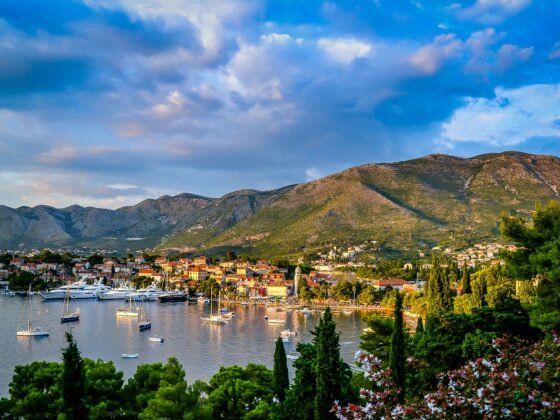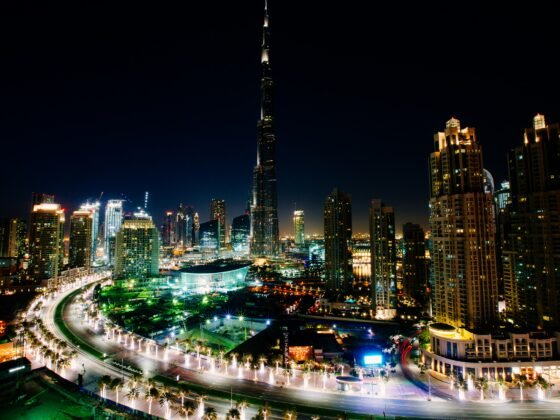First Time in Munich? Here’s What It Feels Like
Munich isn’t loud. It doesn’t try to impress you with chaos or scale. Instead, it greets you with precision. Everything seems to be where it should be—trains arrive on time, sidewalks are clean, and even the dogs look well-behaved. But beneath that calm surface, there’s something quietly magnetic about the city.
You’ll feel it when you stand in Marienplatz as the Glockenspiel chimes, when the sun filters through the trees in the English Garden, or when you find yourself drinking a beer the size of your head next to a table of laughing strangers in a beer garden. Munich doesn’t overwhelm you—it wins you over slowly, through order, beauty, and moments that feel entirely yours.
The Old and the New: What to Actually See
Landmarks with Story
Munich’s beauty isn’t just skin-deep—it’s layered. The heart of the city, Marienplatz, is where it all begins. The Neues Rathaus, with its towering gothic spires, dominates the square. Wait for the Glockenspiel to chime—it’s touristy, sure, but still charming in a “how is this real?” kind of way.
Green Escapes
Wander a bit and you’ll reach the Residenz, the former royal palace, with its mirrored halls and sprawling courtyards. Just across from it is the Hofgarten, where violinists often play under archways and locals play chess near the fountain. Then there’s the English Garden—a park so large and varied it feels like a city within a city. You’ll find joggers, sunbathers, nudists (yes, that’s normal here), and even river surfers riding the wave at the Eisbach.
Museums and More
If you love museums, Munich won’t let you down. The BMW Museum offers both design and history, while the Pinakothek der Moderne is a must for fans of modern art. If soccer is your thing, Allianz Arena is where the energy of Bayern Munich fans turns concrete into thunder.
Where the Locals Are: Markets, Neighborhoods, and Beer Gardens

Everyday Charm
To feel the pulse of everyday Munich, you have to leave the postcard behind. Start with Viktualienmarkt—a daily food market where the produce looks sculpted and the cheese counters are works of art. Grab a pretzel, a hunk of cheese, and just sit. You’re already doing it right.
Neighborhoods with Soul
Then make your way to Glockenbachviertel, a neighborhood that blends creativity with cool. It’s where young professionals and artists live, where vintage shops sit next to modern galleries, and where coffee is more than just caffeine. Gärtnerplatz, its stylish neighbor, feels like a place where Sunday mornings stretch into the afternoon.
In the east, Haidhausen offers quiet streets, 19th-century architecture, and plenty of spots to linger without rush. And wherever you go, make time for a beer garden. The Hirschgarten claims to be the largest in the world. The Augustiner-Keller is more traditional. But the real rule is: if there’s shade, cold beer, and people laughing—you’re in the right place.
Getting Around Munich Like You Live There
One of Munich’s biggest perks is how easy it is to move through. The U-Bahn and S-Bahn systems are clean, fast, and simple to navigate. Trams roll through wide streets like clockwork, and even if you miss one, another isn’t far behind.
You’ll find that walking is not only doable, but delightful. The city center is compact, and every corner seems to reveal a new street café or a hidden courtyard. For longer stretches, grab a bike—rental stations are scattered everywhere, and the city is built for two wheels.
You can get by without a car, especially if you’re staying within the city. But if you plan to head out into the Bavarian countryside, that’s where a little horsepower comes in handy.
Need a Ride? Services That Actually Help
Here’s what actually works in Munich when you need to get from A to B:
- Metro (U-Bahn/S-Bahn) – efficient, clean, and well-connected.
- Trams and buses – excellent coverage and surprisingly scenic routes.
- Bike rentals – Nextbike, Lime, and local services are everywhere.
- Taxi apps – Uber is limited; traditional taxis work better within the city.
But if you’re looking to leave the city—to drive through the Alps, visit Neuschwanstein Castle, or wander the lakes around Garmisch—then renting a car is the smart move. Roads are in excellent condition, signage is reliable, and the freedom is unmatched.
If you plan to explore Bavaria or drive through the Alps, we recommend booking your rental car in advance using the link below: https://getmancar.com/munich/rent.
It gives you more flexibility than train schedules ever could—and lets you take the scenic route whenever you feel like it.
Food, Culture, and Everything in Between
Traditional Flavors
Bavarian food may sound heavy, but it’s more comforting than you’d expect. Try Weißwurst with sweet mustard before noon, grab Obatzda with fresh pretzels in a beer garden, and don’t skip the schnitzel.
Modern Bites
Munich isn’t stuck in tradition—there’s a wave of modern cuisine happening too. Vietnamese street food, Italian bistros, and vegan cafés are all part of the city’s flavor now.
Cultural Pulse
Culture lives here, quietly but firmly. Open-air cinemas pop up in the summer. Classical music spills from opera houses. The art scene buzzes without shouting. And in the evening, bars fill slowly, not with rush—but with rhythm.
Munich in Real Life
Munich doesn’t dazzle in a loud way. It doesn’t shout “look at me.” Instead, it’s the kind of city that grows on you hour by hour. The kind of place where you come for the museums but stay for the bike rides, the lazy afternoons, the way the city just works.
It’s polished but never cold. Classic but never stuck. If you’re visiting Germany for the first time—or the fifth—Munich deserves a place at the top of your list.
Image: Ian Kelsall, Unsplash












